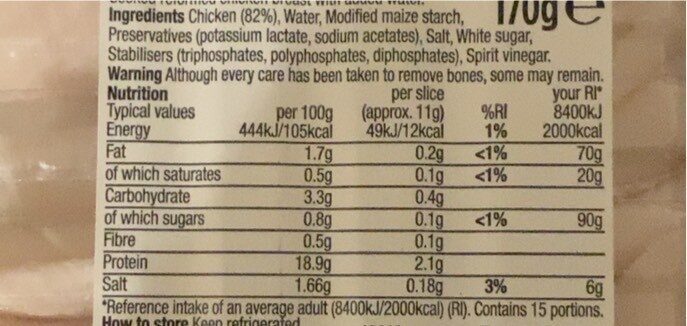Wafer thin cooked chicken - Morrisons - 170 g
This product page is not complete. You can help to complete it by editing it and adding more data from the photos we have, or by taking more photos using the app for Android or iPhone/iPad. Thank you!
×
Barcode: 5010525087603 (EAN / EAN-13)
Common name: Cooked reformed chicken breast with added water.
Quantity: 170 g
Brands: Morrisons
Categories: Meats and their products, Meats, Prepared meats, fr:Charcuteries cuites, Poultry hams, Cooked chicken breast slices, Reconstituted chicken breast slices
Stores: Morrisons
Countries where sold: United Kingdom
Matching with your preferences
Environment
Carbon footprint
Packaging
Transportation
Report a problem
Data sources
Product added on by kiliweb
Last edit of product page on by teolemon.
Product page also edited by inf, moon-rabbit, openfoodfacts-contributors, yuka.sY2b0xO6T85zoF3NwEKvlmJCftPkmD7LEDbSo0Si3oeLK4DHa8Aq-tLnNqs.
If the data is incomplete or incorrect, you can complete or correct it by editing this page.










